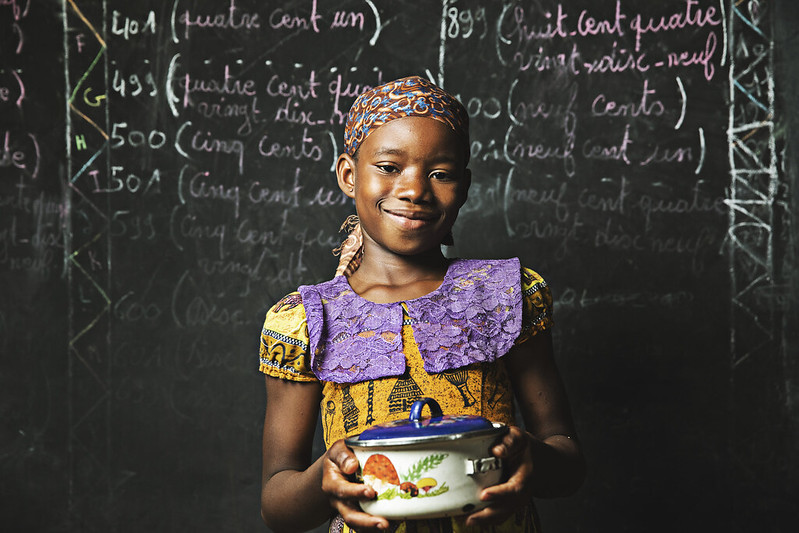Understanding the Humanitarian Crisis in Burkina Faso


Although Burkina Faso faces a severe humanitarian crisis, the country also boasts rich cultural diversity that deserves recognition. Home to more than 60 ethnic groups, each with its customs, languages and practices, Burkina Faso celebrates a vibrant cultural heritage anchored in traditional music and dance.
Burkina Faso Economic Challenges
Burkina Faso’s population is unevenly distributed, with half of its people living in the eastern and central regions. More than two-thirds of the Burkinabe reside in rural areas, primarily near the country’s center. Economic challenges, exacerbated by poor weather and severe droughts, have driven many residents to emigrate. As a result, Burkina Faso is considered one of the world’s poorest countries and heavily relies on humanitarian aid from foreign nations and NGOs. The country exports gold, livestock, sugar and fruit. Despite the generally poor state of public health, the government has achieved notable progress in preventing and treating HIV/AIDS since the early 2000s, with a declining rate of HIV/AIDS cases.
Educational and Social Welfare Issues
In Burkina Faso, only 33% of the population is literate. In response, the country has introduced after-school tutoring at community centers and offers adolescents training in mechanics, hairdressing, sewing, gardening and farm work. Public education in Burkina Faso is not freely provided and many parents struggle to afford schooling for their children. Additionally, a shortage of schools means that even families who can afford it often struggle to find available educational opportunities. As a result, only 81% of students advance to the 5th grade.
More than 40% of Burkina Faso’s population lives below the national poverty line, placing the country 184th out of 191 in the United Nations (U.N.) Development Programme’s 2021-2022 Human Development Index (HDI) report. Although extreme poverty decreased by 0.7% in 2023, about 2 million citizens remain displaced and face food insecurity.
Crisis and Humanitarian Aid for Burkina Faso
Since 2019, Burkina Faso has faced a severe refugee crisis. In the past year alone, an additional 707,000 citizens have become displaced and thousands have lost access to aid. By early 2023, more than 6,100 schools had closed, accounting for nearly half of all school closures in Central and West Africa. Additionally, up to 400 health facilities shut down, leaving 3.6 million people without access to health care—a 70% increase from 2022.
Emergency Aid and International Assistance
In May 2024, the US announced it would provide nearly $55 million to Burkina Faso to help address its ongoing humanitarian crisis. This aid is intended to meet the food and nutrition needs of the most vulnerable Burkinabe citizens. Within Burkina Faso, 20 locations home to half a million people are isolated from the rest of the country and in 2023, fewer than 5,000 of these residents received international aid from nongovernmental organizations. Only two-thirds of the funds allocated to Burkina Faso have been disbursed, mainly because high costs make it challenging to assist those in more isolated areas. Additionally, due to limited financial resources, organizations often prioritize helping those who are more accessible, leaving those in cut-off areas further deprived of sustainable living conditions and basic needs.
Impact of Climate and Economic Challenges
Burkina Faso’s location makes it highly susceptible to drought and climate change. The country is also struggling with ongoing economic challenges stemming from the COVID-19 pandemic. In 2021, the USAID’s Bureau for Humanitarian Assistance allocated $43 million to Burkina Faso to support food and nutrition assistance. This aid included food supplies, locally procured produce, and food vouchers.
European Union’s Commitment to Aid
Projected statistics for 2024 indicated that up to 27% of Burkina Faso’s population would need humanitarian aid. In 2023, the European Union (EU) allocated 44 million Euros to assist the country. These funds are targeting the food crisis and focusing on malnutrition, health, nutrition, shelter, water, sanitation, hygiene, education and rapid response to displacements. This aid aimed to support vulnerable, internally displaced people by providing them with food, shelter and essential items to meet their basic needs. Additionally, the EU provided educational support in areas where schools had closed. The EU offered guidance on preparing for climate-related issues tied to the country’s location.
Looking Ahead
The humanitarian crisis in Burkina Faso presents ongoing challenges, with significant portions of the population facing food insecurity, inadequate health care and educational disruptions. Recent international aid efforts, including substantial contributions from the U.S. and the EU, aim to address these critical needs. However, reaching isolated and vulnerable communities remains a significant hurdle. Continued and enhanced support can potentially improve living conditions and foster sustainable development in the region.
– Brogan Dickson
Brogan is based in Edinburgh, Scotland and focuses on Good News and Global Health for The Borgen Project.
Photo: Flickr
